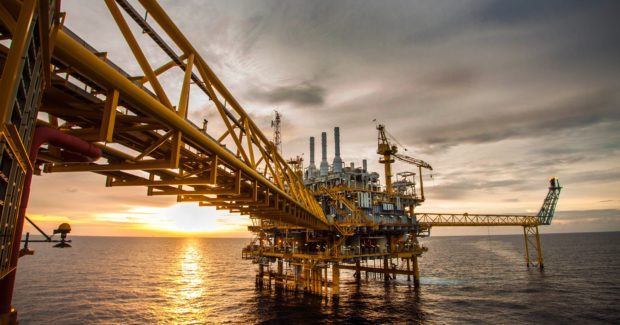Five Ways Oil and Gas Companies Can Maximize the Efficiency of Critical Component Production
Industry 4.0 advancements increase productivity and performance by reducing the margin of error, providing insights into your machining operation, and streamlining and simplifying essential processes.
Posted: January 30, 2022
DEPTH OF CUT
By Jose Acevedo

The everyday operations of oil and gas manufacturers are impacted by government regulations and safety standards — all while companies try to meet high production demands. To remain competitive, companies must achieve production efficiency, tight tolerances, process security, and overall cost savings. Yet, when mistakes are made in the metal-cutting process of oil and gas components, it can become both disruptive and costly, affecting time management, money and overall business reputation.
That is why it is a top priority for oil and gas companies to invest in high-technology drill components to achieve a higher rate of penetration (ROP). The race is on to accelerate well completion to pull product out of the earth rapidly and get it to the marketplace. Thus, quality cutting and hole-making tools to hasten this process is critical toward increasing the bottom line. But many oil and gas manufacturers are not using the most reliable or relevant tools, and instead, they are relying on outdated processes that slow down production. With increasing demand in the industry, oil and gas companies have no other option but to revitalize, revamp and reconsider how they approach daily operations. To maximize the efficiency of machines and metal-cutting tools, companies must research and invest in tooling that is smarter, more reliable and reduces downtime.
There are five steps oil and gas companies must take to achieve the greatest return on investment (ROI) from the machines and metal-cutting tools they use every day.
- Invest in quality, high-performance carbide tooling.
Purchase price does not always equal the total cost spent on a product. If your machine’s cutting tools frequently fail or break, you may be spending more money in the long run in terms of time and disruption. Investing in high-quality carbide tooling translates into high-quality finished components. This gives oil and gas companies a running start toward increasing their ROP through quality holes, threads, tolerances and surface finishes.
- Take steps to keep your machines running longer and reduce downtime.
A myriad of unknowns can happen during a production run but here’s what we do know: most issues with tooling will result in longer production times, which will result in fewer parts produced per cycle. The fewer parts produced per cycle the more you are negatively impacting your bottom line. Factors such as minimizing burrs in holemaking so you don’t have to go back for costly secondary deburring operations are critical to getting it right the first time. Using high-quality tooling that allows for good chip control means fewer machine stoppages to detangle chips from your spindle or replace broken tooling.
- Increase security to optimize your processes.
This may seem easier said than done, but optimizing your processes means you are operating within the most productive and efficient ways to produce high-quality components. In the oil and gas industry that means achieving desired hole tolerances and surface finishes that allow you to not only keep up with but to surpass production demands. Other best practices include knowing and following the correct speeds and feeds for your tool and material. The key is to work with your tooling partner to know when you can push a high-quality tool that can be a game-changer in terms of your on-time deliveries.
- Move forward with Industry 4.0.
It’s time to adopt modern technological advancements so that you can increase productivity and performance. Updated technology is vital because it reduces the margin of error, provides insights into your machining operation, streamlines and simplifies essential processes, and increases productivity. In 2022, it’s not a matter of deciding whether or not you’ll invest in Industry 4.0, it’s a matter of deciding when you will make that investment. The most important segments of production to consider are preventative maintenance, traceability of parts, collision detection and tool failure monitoring.
With increasing demands on rates of production, preventative maintenance may feel like a double-edged sword. But oil and gas manufacturers cannot afford to live by the “if it isn’t broken, don’t fix it” mentality. Regular maintenance is a balancing act of determining when tools need to be swapped out or replaced without interrupting high-production demands. With preventative maintenance technology, the maintenance department is given a more comprehensive picture of the tool’s health. This critical data can help shop managers strategize the best times for essential product maintenance so that productivity is not interrupted. To provide the highest degree of confidence for their customers, oil and gas manufacturers must invest in technology that provides traceability and tool failure monitoring.
That is the goal behind collision detection. With collision detection, manufacturers can identify impact collisions during the go and jog mode through an acceleration sensor. An emergency stop is triggered, when necessary, to prevent major damage, which reduces repair costs and machine downtime. Emergency stops are documented as well, creating traceability and providing useful data.
- Research and invest in CAPEX that allows production to keep pace with customer demands.

To maximize production and efficiency, machine tool technology and software updates must match cutting tool technology. In the industry as a whole, the relationship between machine tools and cutting tools has been one of positive interdependence — neither can function without the other.
For oil and gas manufacturers to stay competitive and up to date with modern advancements, they must ensure that cutting tool technology keeps up with machine technology. Practically, this means that when a company invests in a more powerful or higher-tech machine, they should allocate time and resources to update the cutting tools that correspond with that machine. A good example of this is the investment in anti-vibration tools. Sold at a much higher price point, these specialized tools limit chatter when machining many oil and gas component operations, such as inner diameter turning and long overhangs.
With the highest of expectations for the production of quality drilling components, manufacturers can make tooling choices that drastically increase output to remain competitive. Best practices — such as investing in high-performance carbide tooling, knowledge of how to increase machine utilization by minimizing unnecessary reasons for machine stoppages, and optimizing your processes with reliable and secure operations — allow oil and gas manufacturers to be successful. High-quality carbide tooling translates into high-quality finished components that allow oil and gas companies to increase their ROP and bottom line through quality holes, threads, tolerances and surface finishes.
Oil and gas companies must be careful to avoid machining mistakes that can be disruptive and costly. To achieve the greatest impact and ROI from their cutting tools, it is helpful to access detailed insights into machine statuses, understand when a tool could fail, avoid collisions, and schedule preventative maintenance so that production rates are not stalled or slowed due to unexpected downtime. With thoughtful investments in cutting tools to maximize your machine utilization, oil and gas companies can increase the ROP, maximize productivity, and get the product into the hands of the end customer at a rapid rate. www.ceratizit.com













